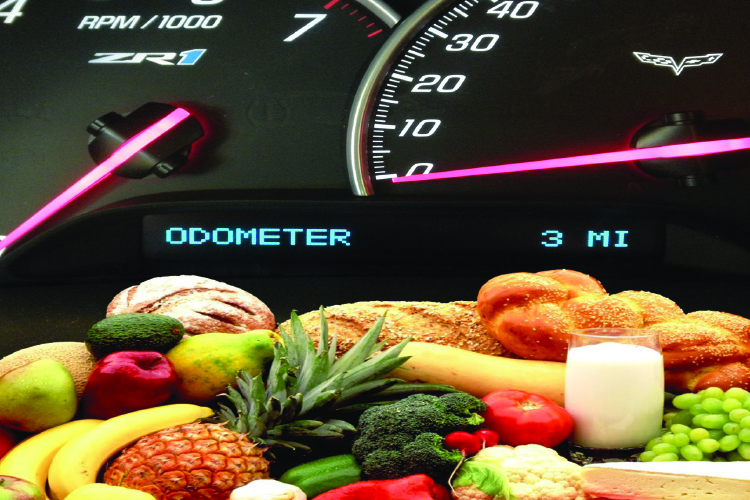Table of Contents
Food Mileage
Food is grown in the farm, rather not in one farm but in many. Some farms are local while many farms are not. They are somewhere in countries like Argentina, New Zealand, and Australia or in the United States. They take a long distance to reach our plate in the form of foods. It’s what we call the ‘field to plate’ distance.
For example, you eat corned beef sandwich and coffee for your breakfast. The corned beef comes from a farm in Argentina. Argentina is more or less 9,939 miles. The wheat for making your bread comes from the US. You need to add another 8,786 miles. The coffee comes from the United Kingdom. Add up another 6,550 miles. Your sugar comes from Penang that adds up another 230 miles. Count the total miles the food travelled to your plate. For just a breakfast of a corned beef sandwich and a coffee, your food mileage totals up to a distance of 25,505 miles. Imagine your lunch and dinner supplemented by one or two snacks in a day.
This food mileage concept first originated from the United Kingdom in the year 1990. Andrea Paxton was the one to research taking this concept. He called it the ‘food mile’ that travelled by your food from the farm to the kitchen.
The Impacts
The food is harvested and stored in silos using up energy. The food is then sent by road transport at the origin of farm for processing unit. This transport and forwarding eat up energy. The food is made into bread, cakes or just flours; again using up energy.
The greater part of emission impact comes with the shipment to overseas countries either as finished product or raw materials. It consumes a great deal of fuel. Apart from it, they are packed and forwarded to overseas market. They choose them all in heavy packing, as the goods need to face a long travel with rough handling on transit points. The shipment is indeed a fuel guzzler.
Of course, using up the fuel releases an enormous amount of carbon dioxide too. Carbon dioxide is a known culprit of global warming. Global warming brings climate changes. Climate changes bring weather extremes. Weather extremes bring disasters in the form of storms, drought, flood, landslides, new diseases and even civil wars amongst states in sharing resources.
What mileage is safe?
This question carries no definite answer. Yet, you can strike the balance of your conscience. How? Think how you can reduce the distance. See if there is an option to go for the low mileage food. May be you have or not. But, try to do some research. Analyse your food distance and see if it can be alternated by others, without affecting your taste and choice. If you can find one, never hesitate to choose it. Try to make some little sacrifices. You sacrifice goes to those negatively impacted by global warming. Remember, there are 150 million environmental refugees finding hard to settle somewhere after losing their homes and homelands.
Reducing the food mileage
How can you do something to reduce your food mileage? You have the choice:
- Go for local foods as much as you can find.
- Don’t depend too much on certain food tastes. Learn to taste all food. They could not have become a food unless they taste something.
- Some regions have seasonal foods. Search out what are they. Try to consume them in the seasons.
- Change to shop at the farmers’ market. They sell fresh produce for a cheaper price. They don’t pack with heavy packing material. Develop a small mental database on farm products around. Take the effort to go and buy them.
- Go for minimum packaged food.
- Substitute non-processed food, as much as you can. Processing consumes more energy causing global warming.
- Have a friendly chat with your restaurant manager while dining. Ask him the percentage of their local food in the menus. Tell him to go for more local food.
- List out all your grocery-shopping items and shop them in one go.
- When you buy items, see the details like food origin, packing, recycling details and mileage, if any.
- Go for less emission and mileage.
- Reduce eating meat. Meat comes after great amount of CO2 emission.
- Buy your local fruits in bulk and see if the excess can be preserved as jam for future use.
- Use the back and front yards to grow vegetable plants. Substitute your menus with as much your own garden vegetables as possible.
- Cook at home and make sure your cooking range is efficient.
- Learn to compost the food left-outs at the backyard or bin.
You can bring your food mileage shorter, if not too short. Sometimes, we need to depend on food coming after a long haul of miles. However, we can change our dependence on food locally available. When there is a will, there surely is a way out.
















